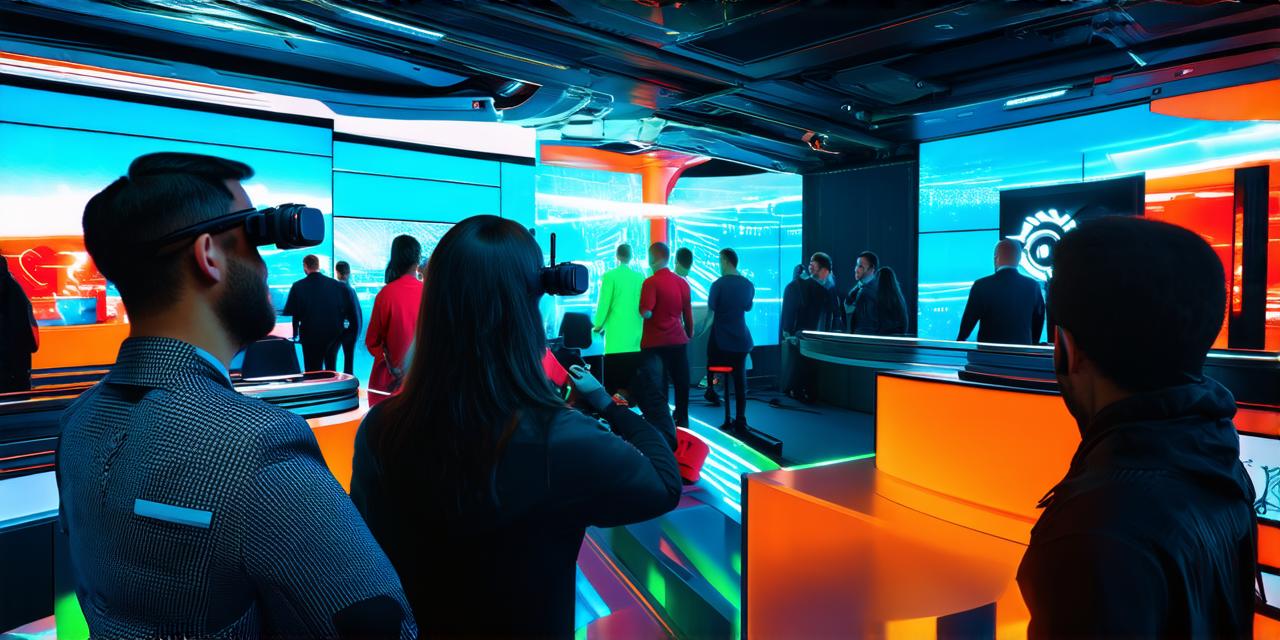Virtual reality (VR) is an exciting technology that has gained significant traction in recent years. The immersive and interactive nature of VR makes it a popular choice for entertainment, gaming, education, and training purposes. With the increasing demand for VR applications, there is also a growing need for developers who can create engaging and effective apps for this platform.
Understanding Virtual Reality: The Basics
Before diving into the technical aspects of VR app development, it is important to understand the basics of this technology. Virtual reality refers to an artificial environment that simulates real-world experiences using computer-generated graphics and sensors. When a user puts on a VR headset, they are immersed in this simulated world, where they can interact with objects and environments in a way that feels natural.
To create an effective VR app, it is important to have a clear understanding of the target audience and the goals of the application. This will help you design an engaging and interactive experience that meets the needs of your users.
Tools for Virtual Reality App Development
There are several tools available that can help you develop VR apps, including game engines, software development kits (SDKs), and virtual reality development platforms. Some popular options include Unity, Unreal Engine, and A-Frame.
When choosing a tool for VR app development, it is important to consider factors such as ease of use, performance, and compatibility with different hardware platforms. You should also consider the level of support available from the tool’s community, as this can impact the speed and quality of your development process.
Designing for Virtual Reality: Best Practices
Once you have chosen a tool for VR app development, it is time to start designing your application. There are several best practices that you should follow when designing for virtual reality, including:
- Keep the user experience at the forefront of your design.
- Use natural interactions and gestures.
- Optimize for performance.
- Test on multiple platforms.
Creating Content for Virtual Reality: Best Practices
In addition to designing your app, you will also need to create content that brings the virtual world to life. This can include 3D models, textures, animations, and sound effects. When creating content for VR, there are several best practices that you should follow, including:
- Focus on quality over quantity.
- Use lighting and shadows effectively.
- Optimize for performance.
- Test on multiple platforms.
Case Studies: Successful VR App Development
To further illustrate the key concepts and best practices discussed in this guide, let’s look at some real-world examples of successful VR app development.
1. “Job Simulator” by Oculus:
This popular VR game simulates a range of everyday jobs, including doctor, chef, and astronaut. The game was designed with a focus on natural interactions and gestures, making it highly engaging for users. It also optimizes for performance, ensuring a smooth and immersive experience.
2. “Tilt Brush” by Google:
This virtual reality painting app allows users to create 3D art in a virtual environment. The app was designed with a focus on quality content, using high-resolution textures and lighting effects to create realistic and engaging artwork. It also optimizes for performance, ensuring a smooth and seamless experience.
3. “Google Expeditions” by Google:
This educational VR app takes users on virtual field trips to museums, historical sites, and natural wonders around the world. The app was designed with a focus on user experience, using intuitive interfaces and natural interactions to create an immersive and engaging learning experience.
FAQs
1. What tools do I need to develop VR apps?
There are several tools available for VR app development, including game engines, software development kits (SDKs), and virtual reality development platforms. Some popular options include Unity, Unreal Engine, and A-Frame.
2. How do I design for VR?
When designing for VR, it is important to keep the user experience at the forefront of your design, use natural interactions and gestures, optimize for performance, and test on multiple platforms.
3. What are some best practices for creating content for VR?
When creating content for VR, you should focus on quality over quantity, use lighting and shadows effectively, optimize for performance, and test on multiple platforms.
4. Can I develop VR apps without prior experience?
While prior experience can be helpful when developing VR apps, it is not necessary. With the right tools and resources, anyone can learn to develop VR apps.
5. What are some real-world examples of successful VR app development?
Some real-world examples of successful VR app development include “Job Simulator” by Oculus, “Tilt Brush” by Google, and “Google Expeditions” by Google.
Summary
Creating apps for virtual reality is an exciting and rapidly growing field. With the right tools, techniques, and best practices, you can create engaging and immersive experiences that captivate your users and achieve your business goals. Whether you are a seasoned developer or just starting out, this guide provides a comprehensive approach to VR app development that will help
